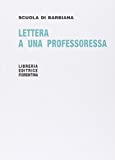
As is customary for this column, the definition of the topic will help us to circumscribe it. So, before seeing how the school has changed, let's start by saying what it is.
The school is an institution (public or private) that aims to educate, that is to transmit the wealth of knowledge typical of the culture to which it belongs.. And here we think of elementary, middle and high schools (whose official names are, respectively, primary, first and second grade secondary school). But school is also the transmission of specific training in a specific discipline, art, technique, profession.
In almost all dictionary definitions, however, a fundamental specification is missing. The educational institution provides for collective teaching, that is, aimed at a certain number of students. In this, the school does not coincide with teaching, which can also take place (and often in the past it did so) through private teaching.

How the school has changed: the ancient era
The transmission of knowledge has always been an irrepressible human impulse, to the point that the word derives from the Latin schola, which first meant free time and then a place where free time is spent.
The reference is to philosophical discussions. In fact, as Raffaello Sanzio reminds us in his famous fresco School of Athens, there is talk of schools of philosophy also referring to groups of philosophers with similar ideas or who think about the same problems.
The school as an institution was born among the ancient Sumerians about 4.000 years before Christ, and was then absorbed without major intervention by the Babylonian conquerors. The school curricula for scribes consisted of subjects such as religion, arithmetic, accounting, history, geography, and grammar.
The Egyptian school was born around 2.000 BC to train young people in state administrative roles. Here, literature and the teaching of a foreign language also played a central role, in addition to physical activity.
More structured (and divided by age cycles) was the teaching in ancient Persia, where great importance was also given to various sports and astronomy.
In the Jewish world, until the sixth century BC there were only schools of Sacred Scripture, but starting from the fifth, both public and private "generalist" schools were introduced.
Greco-Roman antiquity
To understand how the school has changed, the two cultures to which we are most indebted today deserve a separate mention.
The school in Greece was born around 1500 BC, and the school system changes according to the polis. What is important to know is that the school was conceived as a permanent education of a group of people who, guided by a teacher, were educated in knowledge but also in the active exchange of ideas. It is in this way that philosophy is born and develops, as well as the concept of paideia. In other words, a harmonious cultural and moral growth that can produce perfectly integrated citizens.
The Roman school introduces the study of rhetoric and eloquence (who see in Quintilian the first teacher of these subjects salaried by the state). The ferula also appears, a cane for beating inattentive pupils, ancestor of the fearsome wand, in use until well beyond the mid-twentieth century.
How the school has changed: from the Middle Ages to the contemporary age
The completeness of the Roman scholastic institution was inherited in medieval times, where universities and scholastic philosophy were born.
With the era of municipalities, private institutions have multiplied, and modern subjects such as contracts have been introduced.
Impulses for the dissemination of culture and teaching were given in the sixteenth century by the Protestant reform and by religious orders such as the Jesuits.
In the eighteenth century great impetus was given to the study of experimental sciences. And in Italy (starting from the Kingdom of Sardinia) the first public schools run by the state appear.
If in the nineteenth century Napoleon Bonaparte established high schools to cultivate the national elite, the birth of modern states faces the problem of the literacy of the working class, which grows hand in hand with industrialization. In Italy, compulsory schooling dates back to 1877: the Coppino law brings the duration of elementary schools to five years, compulsory at least for the first three years.
The Gentile reform of 1923, in addition to raising the compulsory schooling up to the age of 14, outlines a structure of the course of study that has remained almost unchanged until today.

School today and tomorrow
Beyond the differences, even profound ones, in the educational systems of the various countries, schools and universities from almost all over the planet participated in the 'XNUMX, a socio-cultural phenomenon that saw students, workers and intellectuals lined up.
In that climate, noteworthy were the attempts (even forerunners of 'XNUMX) of a more secular, democratic school that was also open to the humblest classes. Consider, for example, the experiment of Don Milani with the school of Barbiana.
Starting from the XNUMXs the level of computerization of schools is growing exponentially. Today a good percentage of them are equipped with at least one computer room, and a certain number of hours dedicated to the homonymous subject.
Discount Letter to a teacher
Letter to a teacher
- Milani, Lorenzo (Author)
Those over thirty years old would be blown away by entering a classroom and finding the IWB (acronym for multimedia interactive whiteboard) instead of the ancient and glorious slate blackboard.
But the real challenge of the future is represented by distance learning, inevitably jumped to the headlines in the first months of the Coronavirus pandemic.
Although the governments of all countries are willing to keep the school year that has just started in attendance as much as possible, the dad could be a very precious resource for the future. As long as the digital device is smoothed out in all its aspects, from that of infrastructures to that of access to computers and tablets, ending with the hope of a more widespread computer literacy.


























